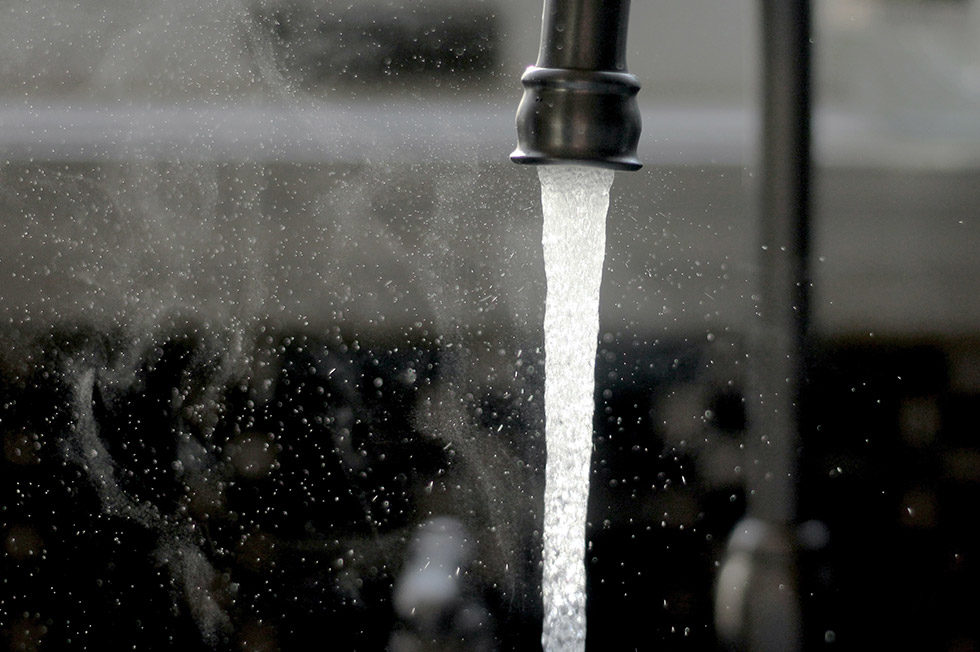What’s Actually in Your Tap Water?

We often assume that our tap water is clean and contaminate free, but what is actually in the water we drink? Sometimes the taste, smell, or texture of the water may seem off, other times you might not notice anything at all; however, it is important to consider the safety of your tap water.
What Impurities are Hiding in Your Tap Water?
There are a number of contaminates that can be found in tap water, including:
- Lead: Sources of lead contamination include lead service lines, lead containing solder, and brass fittings of different types. Lead is a toxic metal that can harmful even at low levels, therefore, the maximum contaminant level is set to zero. However, the regulation system is not full proof, as illustrated by the water crisis in Flint, Michigan.
- Chlorine: Used in the U.S. to kill germs and pathogens, when chlorine mixes with other organic compounds it can create harmful byproducts that have been linked to kidney problems and increased cancer risk.
- Fluoride: Adding fluoride to water began in the U.S. in 1945 when it was discovered that people living in areas with high fluoride levels had fewer cavities. While this seems beneficial, additional research has shown that long-term exposure to high levels of fluoride can lead to fluoride build-up in the bones—causing joint stiffness and pain.
- Volatile Organic Compounds: VOCs are common ground-water contaminants and include a variety of chemicals, some of which may have short- and long-term adverse health effects.
These are just a few of the contaminates that can be found in tap water. It is important to be aware of potential risks associated with contaminated water and the regulations in your area.
Is Tap Water Safe to Drink?
Staying hydrated is a key component of a healthy lifestyle, but is your tap water a safe option?
If your water comes from a public water system in the U.S. it is generally considered safe. The Environmental Protection Agency (EPA) monitors all public water systems and sets health standards when it comes to the contaminants in drinking water.
While your water is not contaminant-free, the levels should not pose any serious risk to your health. That being said, accidents can happen and if the water supply is contaminated the supplier is obligated to make you aware of the problem.
Private wells, on the other hand, are not regulated by the EPA and its water safety can be determined by a variety of factors, including how it was built, its location, maintenance, the aquifer supplying the well, and human activities in the vicinity. It is recommended that you engage with an expert and have your well water tested regularly to ensure its safety.
There are processes in place to make sure contaminate levels remain safe; however, some individuals are at a greater risk for harm. This includes individuals undergoing chemotherapy, people with HIV/AIDS, transplant patients, children and infants, and pregnant women. These individuals should be particularly vigilant when it comes to their drinking water. Purified water is a great option for those at risk and for anyone who wants peace of mind when it comes to their drinking water.
The Benefits of Drinking Purified Water
By opting for a purified option, your water undergoes additional purification that—depending on the system used—can remove contaminates like metals and chemicals.
For instance, charcoal filters remove chlorine. Studies have found an association between chlorinated water and an increased risk of certain cancers.
In addition to removing trace contaminates, water purification also helps improve the taste of your water, providing fresh, clean tasting drinking water. There are several ways to purify water, but UV water purification is effective against bacteria and containments without adding chemicals to your water.
How Does UV Light Kill Bacteria
UV-A is a form of ultraviolet light that removes residual chlorine and its derivatives from tap water through a billion-year-old process called photolysis. Photolysis decomposes molecules, in this case chlorine, by the action of sunlight.
How to De-chlorinate Tap Water Using LaVie
So how does LaVie work to purify your water? LaVie uses UV rays which modify the DNA of bacteria. When exposed for the proper amount of time, the UV light kills, or inactivates, the bacteria in water and therefore prevents its reproduction and ability to cause sickness or other adverse symptoms. Furthermore, LaVie’s UV rays initiate in the process of photolysis, or the breakdown of molecules by light, which works to eliminate chlorine.
Looking for a water purification system? The LaVie UV water purifier operates without filters or maintenance and allows you to purify your tap water in as little as 15 minutes. The system uses an innovative, patented technology exclusive to LaVie: the photolysis of chlorine by UV-A radiation. This treatment removes chlorine and its derivatives, while also eliminating chemical compounds such as pesticides and drug residues.